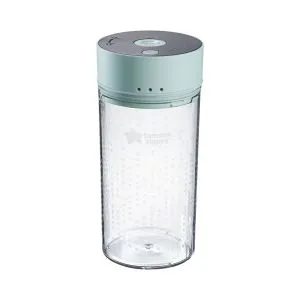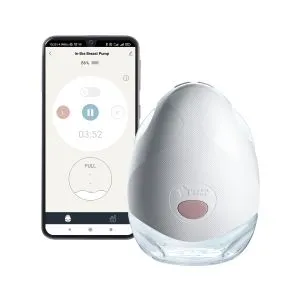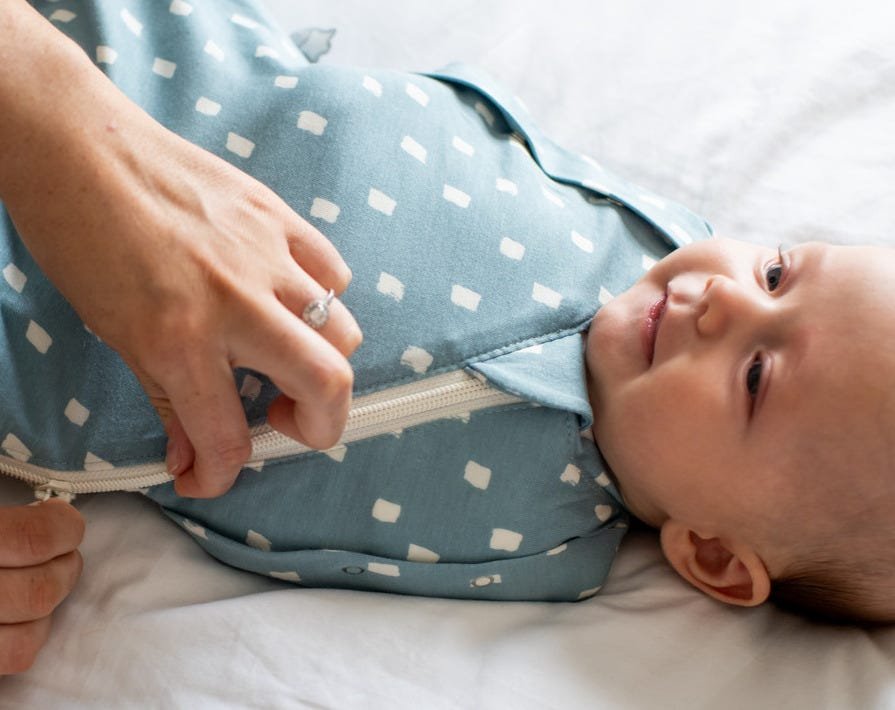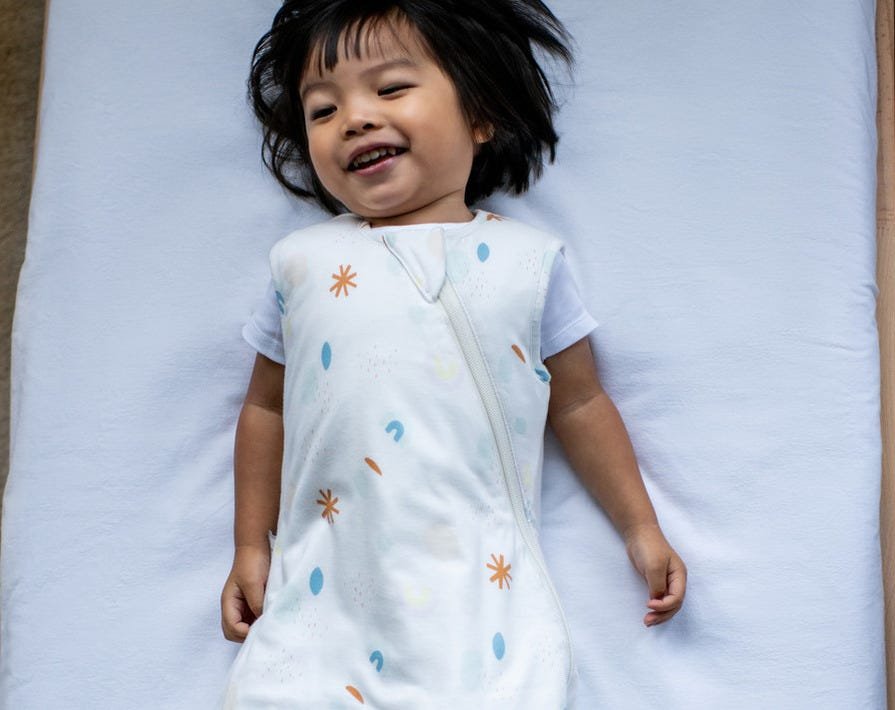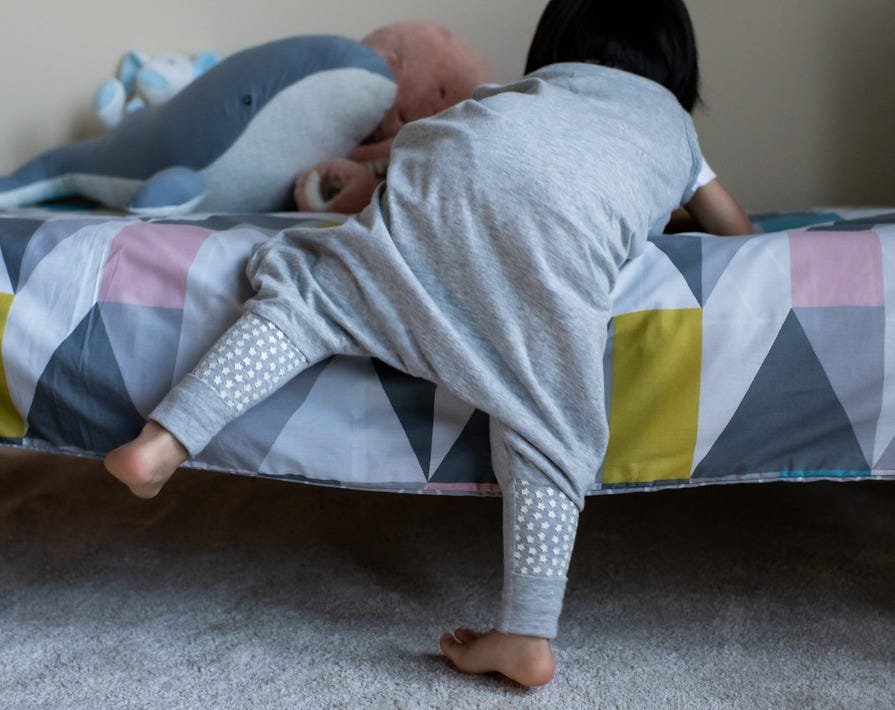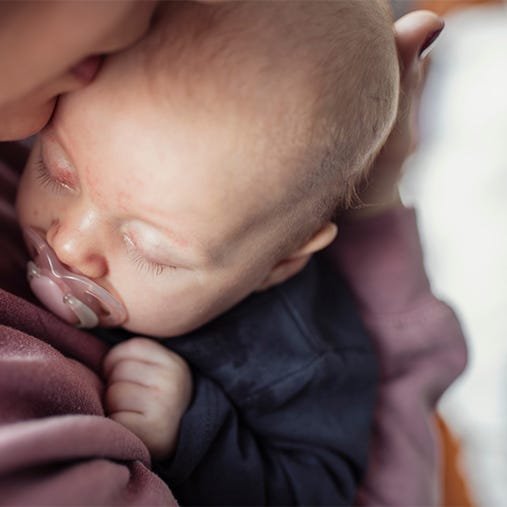What size sleeping bag should my baby wear?
Your baby's head shouldn't be able to pass through the neck hole when their sleepbag is fastened. If it can, the sleepbag is too big for them. Remember to check the weight of your child and refer to the chart below.
Remember, these are recommendations only as all babies are different...
| Sleepwear Size |
Baby's Height |
Baby's Weight |
| 0-3 Months |
up to 62cm |
7-13lbs 8oz / 3.2-6.1kg |
| 3-6 Months |
62-68cm |
13lbs 8oz -18lbs / 6.1-8.2kg |
| 6-18 Months |
68-86cm |
18-25lbs / 8.2-11.3kg |
| 18-36 Months |
86-98cm |
from 25lb / 11.3kg |
What tog should my baby wear?
Tog stands for Thermal Overall Grade. It's a measure of warmth, rather than thickness. A product's tog value is determined by a lab test. Basically, the higher the tog rating, the warmer the product.
The temperature of the room your baby sleeps in will influence the tog that's required.
Here's a breakdown of which tog should be worn when...
|
Sleep Bag Tog
|
Room Temperature |
| 3.5 Tog |
Designed for winter months and cold rooms below 16°C / 57°F |
| 2.5 Tog |
Designed for year-round use and room temperatures between 16-20°C / 57°F-68°F |
| 1.0 Tog |
Designed for warm summer months and room temperatures between 20-24°C / 57°F-75°F |
| 0.2 Tog |
Designed for heatwaves, hot weather, and very warm room temperatures above 24°C / 75°F |
To see you from one season to the next, you might want a few sleepbags in different togs for each season, or a middle-of-the-road bag like our All-Season Sleepbag to cover year-round wear.
What should my baby wear with their sleeping bag?
Generally, the warmer a room is, the less your baby needs to wear under their sleeping bag. Remember that all babies are different, and you'll soon learn what your little one is comfortable in.
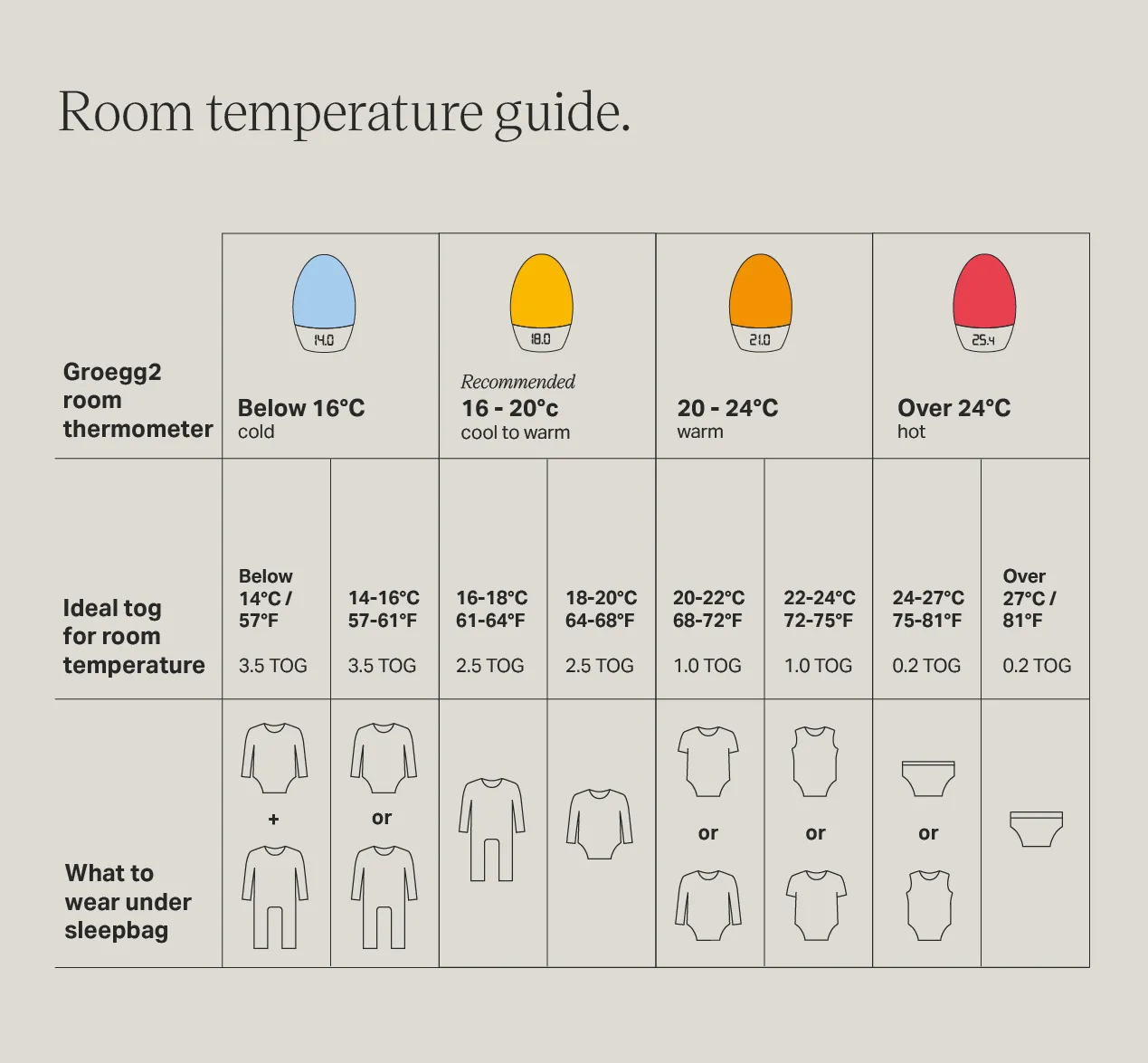
Your baby shouldn't become too warm in their sleeping bag, as long as you choose the correct tog for the room's temperature and they're not wearing too many layers underneath it.
If you can, choose a sleep bag with no sleeves or detachable sleeves, and don't use any clothes or bedding that your little one could get tangled up in.
Signs a baby is too hot can include them...
- Feeling hot or sweaty to touch on their tummy, neck or back
- Having damp hair
- Flushing in the cheeks
- Increasing their breathing rate
To monitor their temperature, The Lullaby Trust suggests feeling your baby's chest or the back of their neck (your baby's hands and feet will usually be cooler, which is normal). If your baby's skin is hot or sweaty, remove one or more layers of bedclothes.
